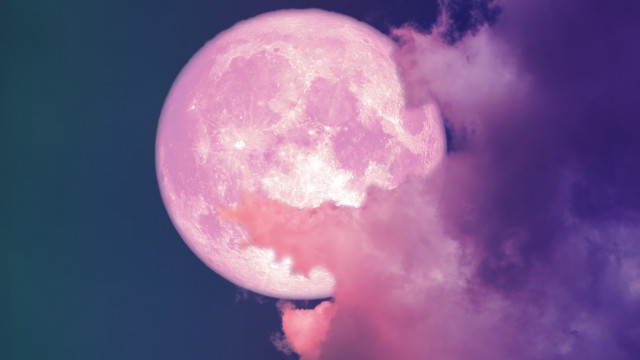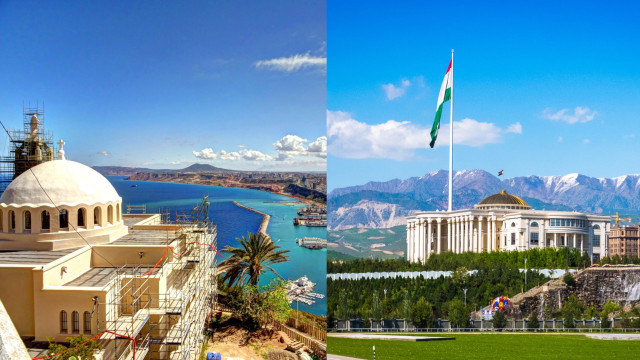





























See Also
See Again
© Shutterstock
0 / 30 Fotos
Names - Most commonly known in the Western world as ayahuasca, the brew is also known as iowaska, yagé, and daime, among other names.
© Shutterstock
1 / 30 Fotos
What it is - Ayahuasca is a brew made out of two plants: the Banisteriopsis caapi vine and the Psychotria viridis leaf.
© Shutterstock
2 / 30 Fotos
Origin - The brew is used as a traditional spiritual medicine in ceremonies by at least 75 different indigenous peoples of the Amazon basin throughout the regions of Peru, Colombia, Ecuador, and Brazil.
© Shutterstock
3 / 30 Fotos
Meaning - Ayahuasca is the hispanicized spelling of a Quechua word, a language spoken in Ecuador, Bolivia, Peru, and Colombia.
© Reuters
4 / 30 Fotos
Meaning - Aya means spirit, soul, corpse, or dead body, and waska means rope, woody vine, or liana.
© Shutterstock
5 / 30 Fotos
Meaning
- So "ayahuasca" has been taken to mean "liana of the dead" or "liana of the soul." (Photo: Flickr/CC BY-NC-ND 2.0)
© Flickr/Creative Commons
6 / 30 Fotos
Effects - B. caapi contains alkaloids that act as monoamine oxidase inhibitors, or anti-depressants.
© Shutterstock
7 / 30 Fotos
Effects - Also present in ayahuasca is the shrub Psychotria viridis, which contains the brew's primary psychoactive compound, dimethyltryptamine.
© Shutterstock
8 / 30 Fotos
History - The use of ayahuasca has been well established as predating the Columbian era.
© Shutterstock
9 / 30 Fotos
History - But others believe that its usage dates all the way back to the primitive inhabitants of South America.
© Shutterstock
10 / 30 Fotos
History
- That's because a ceremonial cup, believed to be at least 2,500 years old, was found in Ecuador containing traces of ayahuasca.
© Flickr/Creative Commons
11 / 30 Fotos
Uses - The use of this psychotropic tea is in medicine, religious ceremonies, and rites of passage.
© Shutterstock
12 / 30 Fotos
Uses - In an indigenous context, ayahuasca was primarily used by the shamans of the Amazon region for healing and divinatory purposes.
© Reuters
13 / 30 Fotos
Ceremonies - Through ayahuasca ceremonies, the shamans use the tea as a diagnostic tool to discover the roots of illnesses in their patients.
© Shutterstock
14 / 30 Fotos
Ceremonies
- For centuries, these cultures have believed that the tea provides access to the human psyche.
© Flickr/Creative Commons
15 / 30 Fotos
Combination of two plants
- How the shamans began to mix the vine and the leaf of the two different plants remains a mystery. On their own, the plants are relatively inert. (Photo: Flickr/CC BY-NC-ND 2.0)
© Flickr/Creative Commons
16 / 30 Fotos
Effects - Those who drink the brew report perceptual hallucinations, which generally peak at about one and a half hours after ingesting, and last about four hours.
© Shutterstock
17 / 30 Fotos
Effects
- The hallucinations are said to come and go in waves, and do not happen continuously.
© Flickr/Creative Commons
18 / 30 Fotos
Effects
- Some users also report enhanced hearing, claiming that sounds become more clear and distinct.
© Flickr/Creative Commons
19 / 30 Fotos
Effects
- Users also report gaining new insight into personal concerns.
© Flickr/Creative Commons
20 / 30 Fotos
Effects
- Normal emotions, like happiness, sadness, or anger, are also said to intensify when under the influence.
© Flickr/Creative Commons
21 / 30 Fotos
Effects
- Many users have likened the experience to the sensation of dreaming.
© Flickr/Creative Commons
22 / 30 Fotos
In Brazil
- In Brazil, the practice and use of ayahuasca, or daime, has been combined with Christian and Afro-Brazilian religious beliefs, giving rise to the Santo Daime, the União do Vegetal, the Barquinha, and other spiritual movements.
© Flickr/Creative Commons
23 / 30 Fotos
Santo Daime
- Among those, Santo Daime is the most well-known. The syncretic religion was founded in the 1930s by Raimundo Irineu Serra (pictured). (Photo: Flickr/CC BY-NC 2.0)
© Flickr/Creative Commons
24 / 30 Fotos
Mainstream
- The rise of these new spiritual movements has contributed to the spread of ayahuasca throughout South American societies, and beyond.
© Flickr/Creative Commons
25 / 30 Fotos
Mainstream
- Ayahuasca saw a surge in interest in the late 1960s and 1970s with the psychedelic revolution.
© Flickr/Creative Commons
26 / 30 Fotos
Ayahuasca retreats
- Retreats have started to pop up where people outside the traditional lifestyle can attempt to receive the healing benefits of the sacred brew.
© Flickr/Creative Commons
27 / 30 Fotos
Legality
- Ayahuasca’s legal status is complicated. It contains DMT, which is an internationally prohibited drug. However, the preparation is considered sacred in many countries, so exceptions exist. (Photo: Flickr/CC BY-NC 2.0)
© Flickr/Creative Commons
28 / 30 Fotos
Legality
- Ayahuasca is legal in Brazil and Peru, which are the countries with the largest number of retreats. In the US, two religious groups (the UDV and Santo Daime) have been given approval to use ayahuasca. (Photo: Wikimedia/CC BY-SA 3.0)
© Wikimedia/Creative Commons
29 / 30 Fotos
© Shutterstock
0 / 30 Fotos
Names - Most commonly known in the Western world as ayahuasca, the brew is also known as iowaska, yagé, and daime, among other names.
© Shutterstock
1 / 30 Fotos
What it is - Ayahuasca is a brew made out of two plants: the Banisteriopsis caapi vine and the Psychotria viridis leaf.
© Shutterstock
2 / 30 Fotos
Origin - The brew is used as a traditional spiritual medicine in ceremonies by at least 75 different indigenous peoples of the Amazon basin throughout the regions of Peru, Colombia, Ecuador, and Brazil.
© Shutterstock
3 / 30 Fotos
Meaning - Ayahuasca is the hispanicized spelling of a Quechua word, a language spoken in Ecuador, Bolivia, Peru, and Colombia.
© Reuters
4 / 30 Fotos
Meaning - Aya means spirit, soul, corpse, or dead body, and waska means rope, woody vine, or liana.
© Shutterstock
5 / 30 Fotos
Meaning
- So "ayahuasca" has been taken to mean "liana of the dead" or "liana of the soul." (Photo: Flickr/CC BY-NC-ND 2.0)
© Flickr/Creative Commons
6 / 30 Fotos
Effects - B. caapi contains alkaloids that act as monoamine oxidase inhibitors, or anti-depressants.
© Shutterstock
7 / 30 Fotos
Effects - Also present in ayahuasca is the shrub Psychotria viridis, which contains the brew's primary psychoactive compound, dimethyltryptamine.
© Shutterstock
8 / 30 Fotos
History - The use of ayahuasca has been well established as predating the Columbian era.
© Shutterstock
9 / 30 Fotos
History - But others believe that its usage dates all the way back to the primitive inhabitants of South America.
© Shutterstock
10 / 30 Fotos
History
- That's because a ceremonial cup, believed to be at least 2,500 years old, was found in Ecuador containing traces of ayahuasca.
© Flickr/Creative Commons
11 / 30 Fotos
Uses - The use of this psychotropic tea is in medicine, religious ceremonies, and rites of passage.
© Shutterstock
12 / 30 Fotos
Uses - In an indigenous context, ayahuasca was primarily used by the shamans of the Amazon region for healing and divinatory purposes.
© Reuters
13 / 30 Fotos
Ceremonies - Through ayahuasca ceremonies, the shamans use the tea as a diagnostic tool to discover the roots of illnesses in their patients.
© Shutterstock
14 / 30 Fotos
Ceremonies
- For centuries, these cultures have believed that the tea provides access to the human psyche.
© Flickr/Creative Commons
15 / 30 Fotos
Combination of two plants
- How the shamans began to mix the vine and the leaf of the two different plants remains a mystery. On their own, the plants are relatively inert. (Photo: Flickr/CC BY-NC-ND 2.0)
© Flickr/Creative Commons
16 / 30 Fotos
Effects - Those who drink the brew report perceptual hallucinations, which generally peak at about one and a half hours after ingesting, and last about four hours.
© Shutterstock
17 / 30 Fotos
Effects
- The hallucinations are said to come and go in waves, and do not happen continuously.
© Flickr/Creative Commons
18 / 30 Fotos
Effects
- Some users also report enhanced hearing, claiming that sounds become more clear and distinct.
© Flickr/Creative Commons
19 / 30 Fotos
Effects
- Users also report gaining new insight into personal concerns.
© Flickr/Creative Commons
20 / 30 Fotos
Effects
- Normal emotions, like happiness, sadness, or anger, are also said to intensify when under the influence.
© Flickr/Creative Commons
21 / 30 Fotos
Effects
- Many users have likened the experience to the sensation of dreaming.
© Flickr/Creative Commons
22 / 30 Fotos
In Brazil
- In Brazil, the practice and use of ayahuasca, or daime, has been combined with Christian and Afro-Brazilian religious beliefs, giving rise to the Santo Daime, the União do Vegetal, the Barquinha, and other spiritual movements.
© Flickr/Creative Commons
23 / 30 Fotos
Santo Daime
- Among those, Santo Daime is the most well-known. The syncretic religion was founded in the 1930s by Raimundo Irineu Serra (pictured). (Photo: Flickr/CC BY-NC 2.0)
© Flickr/Creative Commons
24 / 30 Fotos
Mainstream
- The rise of these new spiritual movements has contributed to the spread of ayahuasca throughout South American societies, and beyond.
© Flickr/Creative Commons
25 / 30 Fotos
Mainstream
- Ayahuasca saw a surge in interest in the late 1960s and 1970s with the psychedelic revolution.
© Flickr/Creative Commons
26 / 30 Fotos
Ayahuasca retreats
- Retreats have started to pop up where people outside the traditional lifestyle can attempt to receive the healing benefits of the sacred brew.
© Flickr/Creative Commons
27 / 30 Fotos
Legality
- Ayahuasca’s legal status is complicated. It contains DMT, which is an internationally prohibited drug. However, the preparation is considered sacred in many countries, so exceptions exist. (Photo: Flickr/CC BY-NC 2.0)
© Flickr/Creative Commons
28 / 30 Fotos
Legality
- Ayahuasca is legal in Brazil and Peru, which are the countries with the largest number of retreats. In the US, two religious groups (the UDV and Santo Daime) have been given approval to use ayahuasca. (Photo: Wikimedia/CC BY-SA 3.0)
© Wikimedia/Creative Commons
29 / 30 Fotos
Delve into the fascinating ancient tradition of ayahuasca
This ancient tea has been part of Amazonian peoples' rituals for centuries
© Shutterstock
You've probably heard of ayahuasca by now. And you've probably heard some misconception about it along the way. This South American sacred brew is an ancient, powerful, and traditional tool that has been used by dozens and dozens of different peoples who have depended on it for medicinal and spiritual reasons.
Click through the gallery and delve into this often misunderstood tradition.
RECOMMENDED FOR YOU




































MOST READ
- Last Hour
- Last Day
- Last Week
-
1
CELEBRITY Relationships
-
2
LIFESTYLE Throwback
-
3
LIFESTYLE Catholicism
-
4
LIFESTYLE Home remedies
-
5
LIFESTYLE Putin
-
6
FOOD Fine dining
-
7
LIFESTYLE Emotions
-
8
TRAVEL Nations
-
9
LIFESTYLE History
-
10
LIFESTYLE Emergency








